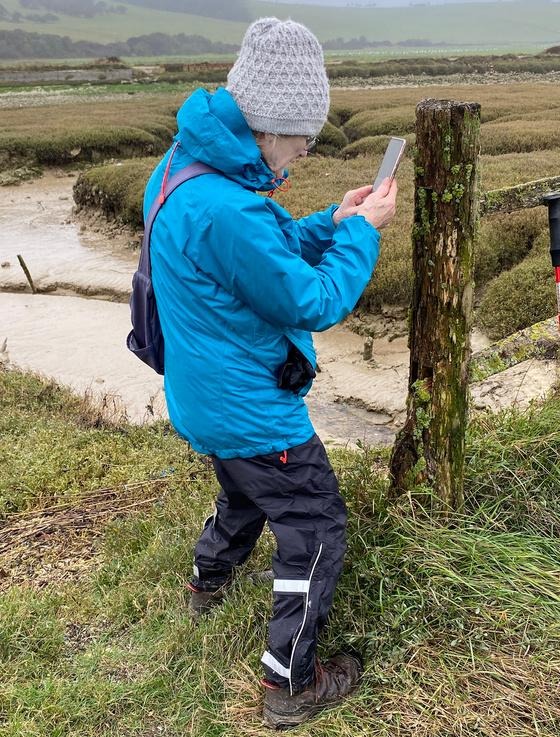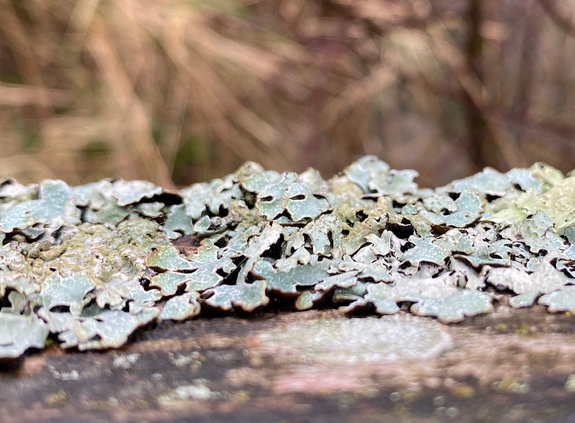A Winter “amble” in the Seven Sister country park was promised!
It turned out to be a little more adventurous than it sounded, as we trudged through claggy mud, slippery saltmarsh and deep puddles. However even through the drizzle and drab grey day, it was still a walk where nature was the star!
As Marion and Mike gave the introductions, a heron stole the show, flying with twigs towards the heronry at the edge of Friston Forest trees. One of the younger members of our group spotted a stonechat flitting about in the thorny scrub not long after we set off.
Though the hedges and trees were still bare, some fabulously vivid lichen kept our interest. Cockles and periwinkles could be spotted in puddles in the saltmarsh.
When you are watching your feet in the mud, you can sometimes spot things of interest down there. Hoof tracks of the reserve ponies, perhaps even a deer?
With visibility poor it was tricky to spot some of the birds, though it was helpful to be guided by the birdwatchers who shared views down their scopes. Sometimes you don’t need to see birds to identify them. A thrush sung happily from cover and all along the way the skylarks sung spiralling songs above our heads. Spring is certainly on its way.
At the turning back point, we learned more about the man-made islands in the lagoons which help ground nesting birds to stay safe. Sadly the long billed dowitcher that flew briefly over was missed by most of us, but we still spotted enjoyed good sightings of little egrets, shelducks, redshank, swans, cormorants, little grebes and a snipe.
The botanists among us noticed a lot of interesting vegetation that will make us go back to see the plants in flower later in the year. Hemlock (or one of the Water Dropworts) can be deadly poisonous while salad burnet lives up to its name, smells like a cucumber and a fine addition to a salad. We learned more about the plant that inspired Velcro fastenings.
We also saw less welcome sights including litter and nurdles – tiny bits of plastics that are too small to remove by litter-picking, and pollute the landscape and cause harm to our wildlife
We were a little late back to the carpark after being distracted by the view of a raven up on the hill. Our experts helped to explain how it could be distinguished from the more common corvids.
People were encouraged to record their sightings using pencil and paper or a phone app, so a species list should follow soon.
Many thanks to Mike and Marion of Seaford Natural History Society for organising this event, and for everyone who came along. I think most of us learned something, and enjoyed getting out in the fresh air in such a fantastic habitat with other nature lovers.
Judy
Do check out the other walks and talks in this series here
These talks are supported by On the Verge and Ouse Valley Climate Action fund
Many thanks to Esme from Seaford Head Eco Club for sharing her lovely photos below!










